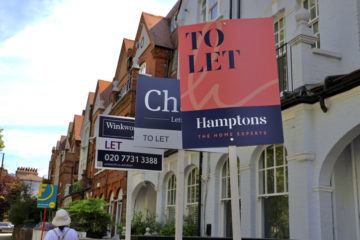London rental costs set to increase by £1,412 per year by 2025
Using the last decade of rental market data for each London borough, rental platform Rentd has forecast what the average cost of renting could look like in London by 2025.
The largest London monthly rent increases are forecast to be seen in the boroughs of Kingston, Newham, and Barking and Dagenham, Rentd reports.
The research shows that currently, the average London rent is £1,629 per month, having increased by 24% in the last decade. This is a 2.4% average annual rate of growth.
Based on this annual rate of growth, Rentd’s forecast estimates that this could hit £1,747 per month by 2025, a further 7% increase. This would mean the average London tenant would be paying £118 more per month, or £1,412 more per year.
Rentd’s research estimates that Kingston upon Thames could be due to see the largest increase in the cost of renting. Currently the average monthly rent in the borough stands at £1,519 per month having increased by 59% in the last year alone. This is forecasted to climb by 17% to a monthly average of £1,783 by 2025, adding £3,171 to the annual cost of renting.
Newham is also forecast to see a 17% increase in rental values, meaning tenants would be paying an additional £3,068 per year to rent within the borough.
Tenants in Barking and Dagenham (+14%), Waltham Forest, Richmond and Greenwich (+13%) could also face some of the largest percentage increases in the average monthly cost of renting, while Richmond (+£2,940), Wandsworth (+£2,507) and Hackney (+£2,364) are also due to see some of the largest monetary increases in the annual cost of renting.
At £2,359 per month, Westminster is currently the second least affordable London borough when it comes to the cost of renting, with just Kensington and Chelsea home to a higher average monthly rent (£2,716).
However, Rentd’s forecast suggests that Westminster rents could climb by just 1% by 2025, an increase of just £27 per month or £329 per year.
Ahmed Gamal, Founder and CEO of Rentd, comments: “The cost of renting within London has increased considerably over the last decade, driven by a sustained level of tenant demand, not just because the cost of buying is so high, but also due to a move towards long-term renting as a lifestyle choice, not just a necessity.
“Despite this, the government has done its best to deter investment into the London rental market, with a string of legislative changes designed to dent the returns available to landlords. This has further reduced the level of available stock within the capital and contributed to the high increase in the cost of renting that London’s tenants face today.
“While it’s great to see the London rental market demonstrate a high level of resilience following what was a fairly complicated pandemic period, more must be done to entice investment into the sector to prevent the future cost of renting spiralling out of reach for the average tenant.”



